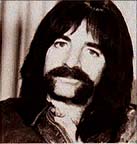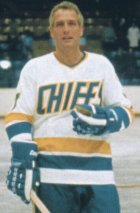Craving Culture?
by Steve, January 4th, 2008I know I am, so I’m heading to the theatre tonight. Here’s a little Bartok to tide you (me) over. The Ammadeus Quartet plays Bartok’s String Quartet number four, fourth movement.
I know I am, so I’m heading to the theatre tonight. Here’s a little Bartok to tide you (me) over. The Ammadeus Quartet plays Bartok’s String Quartet number four, fourth movement.
Since I’m on a YouTube faves kick, here’s a movement from one of my favorite string quartets. The Hugo Wolf Quartet plays Bartok’s fourth string quartet, first part, Allegro, with a little cinematic treatment. (Sorry, the clip kind of cuts off at the end.)
One of my favorite alto players, showing his range as a musician and band leader. Paquito D’Rivera!
One of my favorite songs from one of my favorite movies… The Band with the Staple Singers, for your enjoyment.
Before I had kids and became obsessive about school politics and hockey, I used to play music. The last group I played with before laying down my saxophone was Poli Chavez y Sus Coronados. The Coronados were an innovator of the “Tex Mex” sound in San Diego, and Poli brought the band’s cumbia, ranchera and conjunto rhythms with him to Portland in 1978.
I met Poli through his son in 1996 or 1997, and played a few Quinceañeras, weddings and anniversary parties with the band. Poli’s book was thick; there were probably a hundred or more well-worn charts in the alto sax book he handed me at my first rehearsal. Most of the songs were standards, but I’d never played any of them. After one rehearsal and one gig basically sight reading, I begged him to let me take the alto book out of his sight and photocopy some of the songs I really needed to practice, like the classic Rico Mambo. He grudgingly let me take it, and I still have my copies.
The Portland version of the Coronados was a family band. I replaced his son on alto sax. Another son played tenor sax, and his son-in-law played trumpet.
Though Poli was something of a legend in the world of Tex Mex music, few in the Portland Anglo community knew about him. Their best chance to have heard him was the annual Cinco de Mayo festival at Waterfront Park, where he was a mainstay. The last time I worked with him was on the main stage there in 1997.
Napoleon “Poli” Chavez passed away in 2003. I missed it at the time, and only found out when searching for some of his recordings online the other day. My sincerest condolences go out to his large extended family, especially the guys I worked with. Poli was a larger-than-life figure, and touched the lives of many people, myself included.
After the break, there’s a photo montage tribute, featuring songs from his 1976 LP “Mi Nueva Ilucion.”
Read the rest of this entry »
And why not a little Poncho Sanchez to liven things up…
Thelonious Monk “Rythm-a-ning”, 1961
I’m working on a post about school equity, and a map of closed public schools, charter schools and private schools in north and northeast Portland. While you’re waiting for that, listen to this.
It takes great chutzpah to choose Rachmaninoff’s infamous 3rd Piano Concerto as an 18 year old. It takes even more chutzpah — and raw talent and sheer dedication — to pull it off with aplomb.
Judy Park did both Saturday with the Portland Youth Philharmonic. Park led off the PYP’s final concert of the season, also the final Portland concert with Mei-Ann Chen as Conductor.
As chance would have it, Wacky Mommy and I put off buying tickets until just before the show, and chose seats I normally wouldn’t consider from the few that were remaining. Front row, keyboard side, with a perfect view of Chen, Park (and her hands!) and the first violins. Park nailed Rach 3 technically, with strong backing from the orchestra. It was an audacious choice of material. Sergei Rachmaninoff wrote it to show off his own virtuosic piano skills, and many seasoned professionals shy away from it. It’s considered the most difficult concerto in the classical piano repertoire.
Despite all these warning signs, the young Ms. Park plunged ahead and pulled off not only a stunning technical display, but also a nuanced, emotional and powerful rendering of the beast. It left me wanting to hear more of Park, and I have a feeling we will have the chance to hear much more from her as she matures as an artist and enters the professional world.
After the intermission, the brass section took up two opposing formations for a brief antiphonal fanfare by self-taught Japanese Composer Toru Takemitsu, from his Signals from Heaven. Takemitsu claimed Debussy as his “teacher”, and Chen followed his sleepy fanfare with a Debussy Nocturne.
The evening was capped off with Béla Bartók‘s Concerto for Orchestra. I’m kind of a Bartók nut, so this was a great capper for the evening. There is nothing on this Earth that compares to sitting in the front row with your eyes closed, enveloped with the three dimensional world of sound sketching the ethereal outlines of Bartók’s soul onto your psyche.
I’m ashamed to say that this is the first PYP concert I’ve been too. I’m very sad to have missed Mei-Ann Chen’s tenure here. Judging from her final concert, she is something of an undiscovered genius. She had an obvious rapport with the musicians (several of them presented her with flowers and touching tributes at the end of the evening). But she is also an obvious task master, a stickler for details, and forceful, emotive and sure in her conducting. She had this band of teenagers playing together in ways many (ahem) professional orchestras don’t pull off on a typical night.
You still have one last chance to hear Chen lead the PYP, May 27, 2007, 4:00 PM at the Resort at the Mountain in Welches, Ore., featuring highlights from the ’06-’07 season.
Those who know me off-line (and some who have only read about me here) know that before I developed a mid-life obsession with playing hockey, I had an avocation as a musician. I’ve played out on alto sax, clarinet, bass guitar, string bass and guitar. Music is thus very evocative to me in terms of moods, times and spaces. I once had an argument with a writer friend of mine who insisted that language is more specific than music. My response is that music is every bit as precise; in fact more so.
Anyway, without any more rambling, here are Thirteen Pieces of Music You Should Take The Time to Really Hear:
 No, seriously, if you take the view (as I do) that everything in life is metaphor, you can learn valuable life lessons in anything you do.
No, seriously, if you take the view (as I do) that everything in life is metaphor, you can learn valuable life lessons in anything you do.

For instance, in a previous avocation as a musician, I played bass. In hockey, I play defense. (I’ve come to realize that I spent the first half of my adult life living “This is Spinal Tap.” Now as I enter the middle of life I’m living “Slap Shot.” In the words of Reggie Dunlop, “Fuck ’em.”)
If you’re not familiar with music and hockey, here are the similarities between bass players and defensemen: